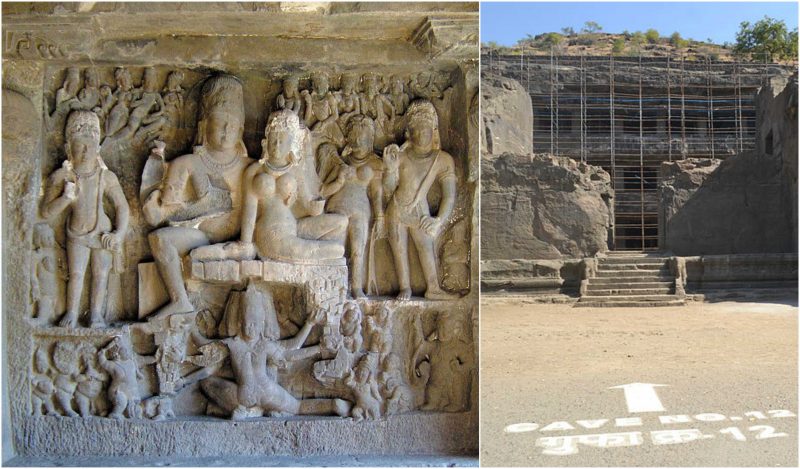Many people know at least one artist who seeks inspiration from the use of recreational drugs. What may surprise people is the new study that shows how cannabis was used to preserve the artwork found within ancient caves in India.
The aforementioned artwork lies in the sacred Ellora caves, located 18 miles (30km) northwest of Aurangabad city in Maharashtra, India. These caves are a group of thirty-four structures hewed from the vertical rock face of the Charanandri hills. The cave complex runs in a north-south direction for about 1.2 miles (2km). The oldest caves are dated to the 6th century, while the newest are dated to the 11th century. In 1983, the Ellora caves were declared a UNESCO World Heritage Site.
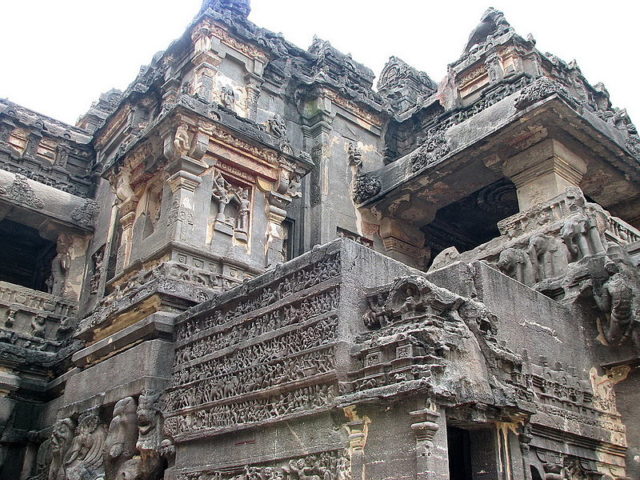
The Ellora caves are a perfect example of the religious harmony that was prevalent during that period of Indian history. The twelve southern caves were used in Buddhist worship. Six of the northern caves were for Jainism, and seventeen caves in between for Hinduism. All the caves have temples or buildings inside that are dedicated to the worship of one of these religions.
One of the more remarkable caves is Cave 16, also known as the Kailasa Temple. What is remarkable is the temple’s size, architecture, and sculptural treatment. It looks to be a freestanding, multistory temple complex, but it is actually carved out of solid rock and covers an area twice the size of the Parthenon in Athens, Greece. Shiva is the main god who is worshiped in this temple, although there are smaller shrines to other Hindu gods. The construction of the Kailasa Temple is popularly attributed to the Rashtrakuta king, Krishna I, who ruled between 756 and 773.
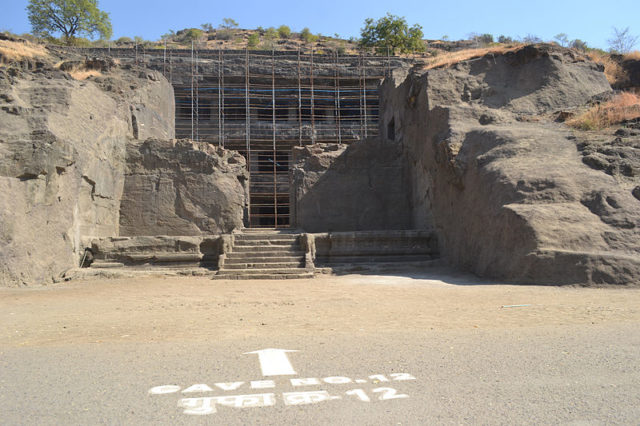
So, what about the cannabis? Incredibly, a mixture of hemp, clay, and lime plaster has been suggested as the reason for the preservation of the paintings and the intricate carved scenes in the Ellora caves. The claim was submitted by a new study by Rajdeo Singh of the Archeological Survery of India’s science branch, and M. Sardesai of Dr. Babasaheb Ambedkar Marathwada University. Their study was published in the journal Current Science.
The preservation, they claim, was made possible because the hemp in the plaster of the walls regulates humidity and deters insects. The nearby Ajanta Caves have older artwork but, presumably since the walls were unprotected by hemp, significant damage had been done by insects.
Furthermore, the study states, cannabis is one of the oldest domestic plants in the history of mankind and has been used for more than 10,000 years. This makes sense, as hemp plants grow rapidly in most climates and enrich poor soils after every crop. It has been used to make rope, paper, clothing, and sails in tropical climates for centuries.
For India, specifically, hemp domestication dates back to 5,000 BC. The plant’s stem was used for fiber, its achene (or fruit) for food and oil, and the resin for medicine. The first recorded use of medical cannabis is in the work of Sushrita (compiled around 1,000 BC), although it is also mentioned in the texts Tajnighuntu and Rajbulubha. In all cases, hemp is described as being used to clear phlegm, treat flatulence, sharpen memory, increase eloquence, and stimulate appetite. Today, cannabis is considered a holy plant by Hindus and is used in their festivals, such as Shivratri.
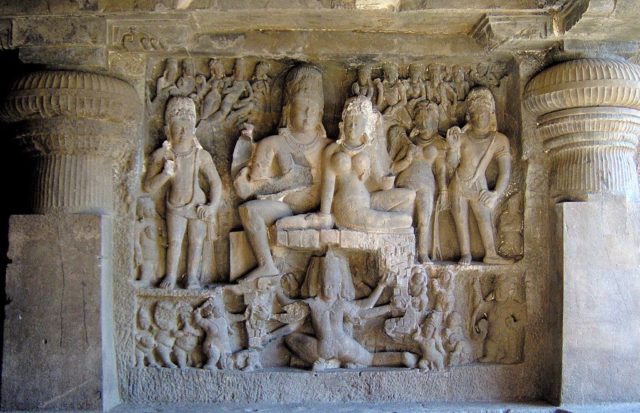
Singh and Sardesai collected a sample of plaster from Cave 12 of the Ellora cave complex and isolated cannabis sativa, or ganja. Then, they examined the sample under a scanning electron microscope. Other techniques, such as Fouriter transform infrared spectroscopy, confirmed the presence of cannabis sativa. Apparently, pounded pieces of shoots, fragmented leaves, and a single flower were found. The pair then compared their specimen to fresh hemp grown near Aurangabad and the outskirts of Delhi. The archaeological specimens were deemed to be similar.
“In the sample collected from the Ellora cave, we found 10 per cent share of cannabis sativa in the mix of mud or clay plaster. This is the reason why no insect activity is found at Ellora.” Dr. Singh told the Times of India. The study suggests that these properties of hemp as a bug repellent and humidity regulator must have been known to the builders of the Ellora caves.
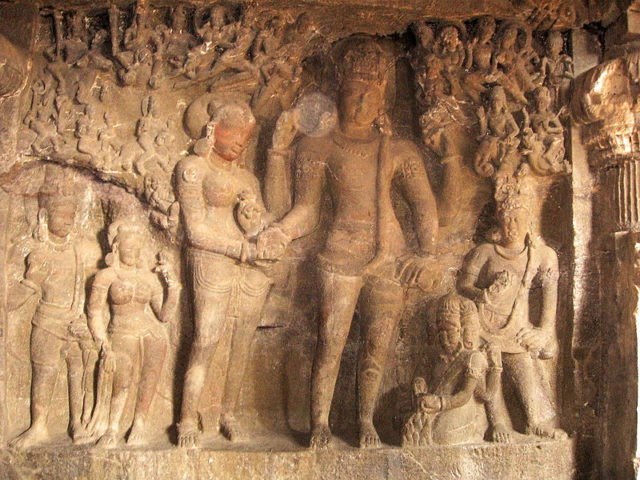
“The remains of Cannabis from the sample of clay plaster of Ellora suggest that it was used with clay/lime binder as insulating agent as well as to provide a degree of strength to the plaster,” the researchers wrote. “Studies in Europe have estimated 600 to 800 years of life span to the hempcrete wall system, but hemp in the clay plaster of Ellora has survived more than 1,500 years. The long life of clay plaster at Ellora, despite damaging environmental parameters, may be attributed to the material properties of hemp, which is fibrous and durable.”
On top of that, their study suggests that hemp plaster has the ability to store heat, resist fire, and absorb up to 90% of sound, meaning it created a “peaceful living environment for the monks” at Ellora Caves.
This discovery could help inform future construction techniques. More sustainable materials are now being sought to lessen environmental impact. The problem, however, with hempcrete is that it would be illegal in places where cannabis is banned.
Overall, the Ellora caves show remarkable preservation that the study attributes to the hemp, even despite the damaging environmental parameters. Such damage can be seen in the Buddhist caves, which are the oldest of the complex. Cave 12, where the sample was taken, is a three story building with traces of paintings on the ceilings and walls of the inner shrine. The designs appear to represent floral and creeper patterns, as well as other geometric shapes. It is obvious, the study concludes, that the color of these paintings has been dulled due to the deposition of soot and weather conditions as the caves were exposed to sunshine and rainfall.
